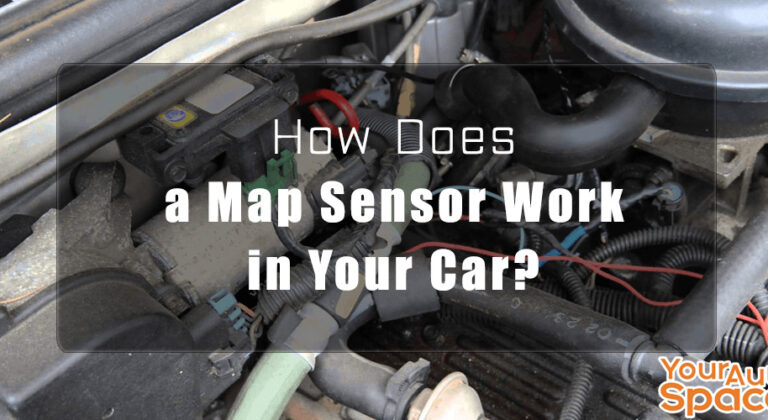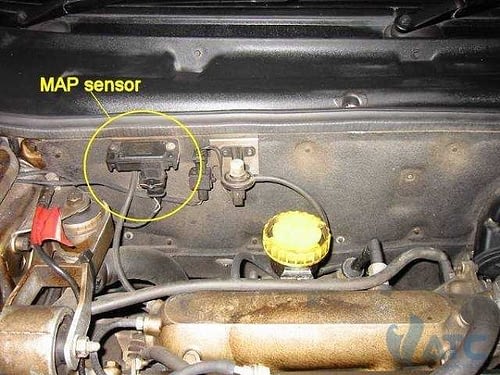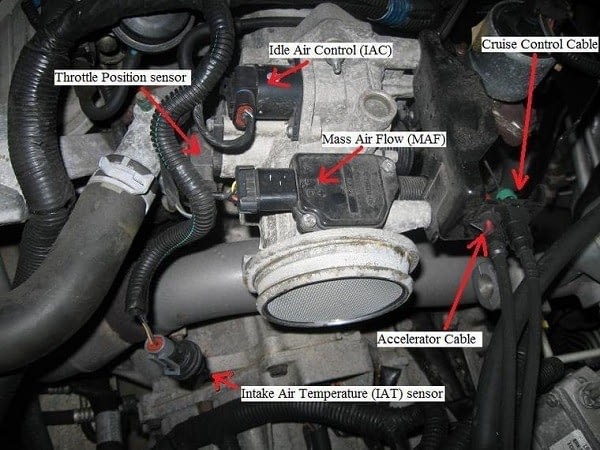
Perhaps you might hear this term several times when a car salesperson is talking about different features of a car. Have you ever wondered what is exactly a MAP sensor and how does it work in your car? In this article, we will show you all necessary information on this important element.

MAP or Manifold Absolute Pressure sensor is basically made to detect or measure the electronic control system of the internal combustion engine. In other words, it provides manifold pressure information to the ECU or electronic control unit of the engine.
The Importance of a MAP Sensor
To learn some basic information about MAP sensor, the first thing we need to know is its importance:
- These days, most modern cars work on a MAP sensor. This is simply because it helps to generate efficient fuel consumption. Many cars with bad MAP sensor can result in a bad overall performance. Therefore, it is so important to keep a check on your engine and sensor.
- To figure out a defective MAP sensor, you need to make an engine diagnostic, which will help you to estimate if it is the right time to replace a MAP sensor.
- An MAP sensor is often placed in the intake manifold of the engine in which it can offer instant manifold pressure to the ECU of the engine. There are some which take advantage of MAP sensor that provides a result of optimal combustion, while the others utilize Mass Air Flow or MAF sensor.
How Does a MAP Sensor Work?
When the engine in your car is not working, the pressure in the intake chamber is the same as the barometric pressure outside. Nevertheless, as soon as it starts, the vacuum is produced, and there will be more pressure in the intake chamber.
The vacuum in an engine is different from situation to situation, which could range from 0 inch to 22 inches or even more. This is dependent on the car’s operating condition. It might may be at or above sea level as a mountain where more amount of oxygen is required.
At ignition, the PCM or powertrain control module turns to a MAP sensor for information, which is measured based on the atmospheric pressure.
The following are a couple of important elements that MAP sensors would consider before measuring the data:
- EGR valve.
- Engine rpm.
- Oxygen sensor.
- Throttle position.
- Air temperature.
- Coolant temperature.
Different Uses of MAP Sensor
1. Determine Fuel Consumption
Many fuel-injected engines utilize various systems to measure how much fuel the engine has burned. Among many devices, MAP is one such sensor which would directly facilitate sending signal of pressure to the computer of the engine.
After this process, the computer will manage to take advantage of the information to determine the car’s air density and mass flow rate. These 2 components are essential in providing productive outputs in any models of car. In addition, the computer could also measure how much fuel is needed to have the best rate of combustion.
2. Measure Fuel Delivery
There are a couple elements which play an important role in terms of measuring the fuel delivery of your engine. Factors like RPM or engine speed, air temperature and ratio of air-to-fuel all comprise a vital part of this process.

In general, the car will accelerate naturally faster when you pump it with excessive fuel. As a result, your desired speed is also dependent on how fast the engine can work.
As you know, MAP sensor take advantage of those factors in calculating the exact data. The amount of fuel to be added into the cylinder mostly depends on the information measured by MAP sensor.
3. Adjust with The Changing Environment
In the city, you might require normal gas bumping. Nevertheless, this requirement would change when your vehicle is moving on a high mountain, for example, which means that it will consume more fuel. Thus, the ratio of air-to-fuel will be obviously different.
MAP sensors provide the respective requirement and offer relevant data to the engine so that the drivers are kept informed about the same.
4. Tell The Difference in RPM
The values of MAP sensor generally change with the difference in the activities’ number in your vehicle. For instance, a MAP sensor will show a 60 kPa for 1800 RPM. Nevertheless, if you turn on the air conditioning; there would be a slight difference in the output. Therefore, MAP sensors play an essential role in sending the right signals to the computer.
MAP versus MAF Sensor
In times, a lot of experts face a challenging question whether MAP or MAF sensor is better for the car’s engine. In general, MAF or Mass Air Flow sensor is directly fueled both by speed density and mass air flow calculations, while MAP sensor measures the density of air by calculating the temperature first.

MAF sensor is quite easier to adjust. Nevertheless, MAP sensor requires less restriction in the intake tract. In fact, many drivers have experienced the consistency with MAF sensor.
Advantages and Disadvantages of MAP Sensor
Advantages
- Drivers can experience less restriction from the intake tract.
- There is much more space for movement at the intake tract.
- The engine could measure consumption of air even at a higher HP.
- Have a positive effect on the engine reliability.
- The drivers can have error-free engine functionality.
Disadvantages
- Sometimes, it can be difficult to adjust the engine with MAP sensors.
- The car requires a Volumetric Efficiency table with good quality for a MAP sensor to provide productive results.
- Minor complications occur when new adaptation are implemented.
Conclusion
Now that you have understood what does a map sensor do in your car precisely, remember to invest considerable amount of time looking for the right model and type. We hope all of the information in this article are helpful to you.
Hi john, i’m homa from iran. i’m student of electrical engineering and for one of my lessons (sensor course) I should present MAP sensor. I search and found your perfect site. thank you so much and excuse me if i wrote wrong. i do’nt know English so much.
thanks.
I’m happy when this article could help you. You welcome.
Looking for help with misfiring on my 1996 Toyota Corolla dx1.8. I had replace plugs back in January and two months ago, butt I was told that if car burns oil fhat it can foul plugs up. Of course then would be the wires and more , so engine light came on and I never saw any engine light blink but it’s blinking . Supposedly it’s a tune up it needs according to auto zone scan , it needs wires so I replace wires cap and roter still misfiring. I did pull each plug wire to see if seen change so 1-2-4 idle drop but number 3 didn’t change anything so what could be problem . Thank you ? Willy